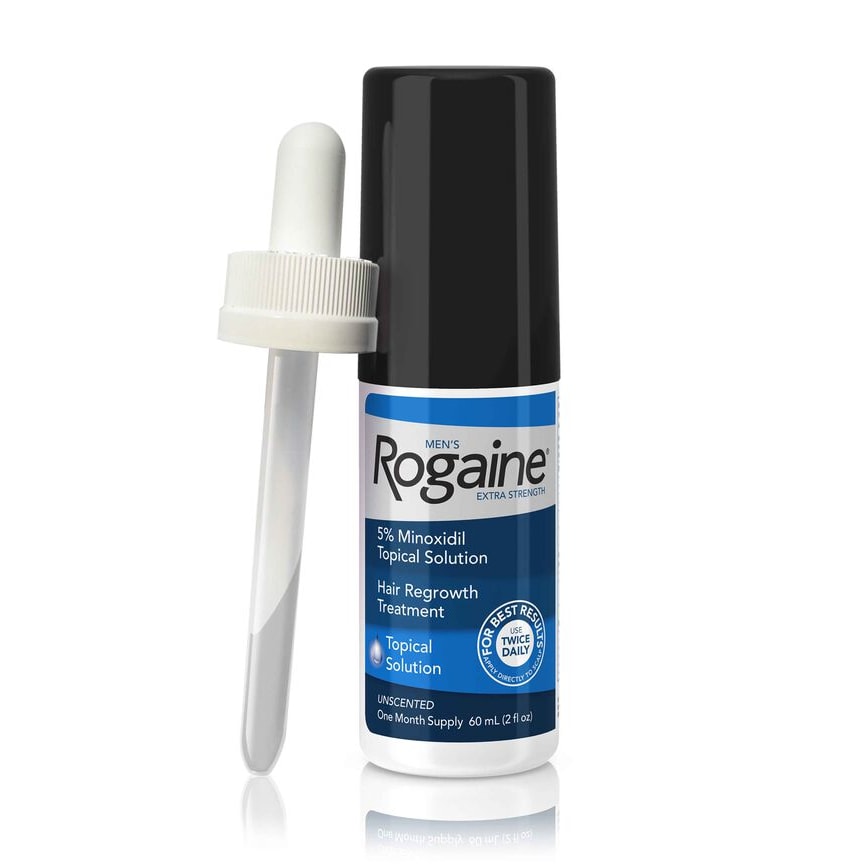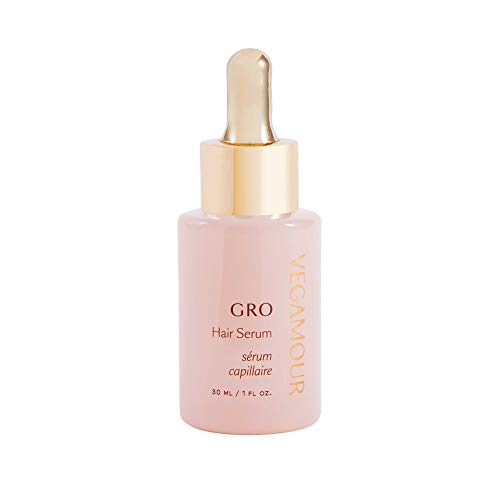At-Home Treatment Options
![]()
Kiierr148Pro Laser Cap ($595)
$595, kiierr.com
![]()
Caboki Hair Fibers ($20)
$20, caboki.com
![]()
Nutrafol Women ($88)
$88, nutrafol.com
![]()
Men's Rogaine Extra Strength 5% Minoxidil Solution ($25)
$25, walmart.com
![]()
Vegamour GRO Hair Serum for Thinning Hair ($52)
$52, sephora.com
All products featured are independently selected by our editors, however, AEDIT may receive a commission on items purchased through our links.

AEDIT
Try on Forehead Reduction (Hair Lowering) Solutions
‘Try on’ aesthetic procedures and instantly visualize possible results with AEDIT and our patented 3D aesthetic simulator.
The Skinny
What is a Forehead Reduction
Forehead reduction surgery is an invasive facial surgery requiring either local or general anesthesia, which can be administered orally or intravenously. Upon sedation, the surgeon marks the location of the postoperative hairline and makes an undulating incision into the forehead. The undulating incision follows a zig-zag type pattern to mimic the natural design of a hairline giving the postoperative hairline a more natural feel. The skin above the marked hairline is then excised to remove the excess forehead skin. This brings the hairline lower to its desired position. The wound is then sutured using multiple layers of stitches and surgical clips to ensure a safe closure of the incision and a clean healing process. The use of multiple layers of stitches and clips will ensure minimal scarring as you recover. As you heal, hair begins to grow through the incision site covering up the stitches as they heal.
In some cases where the hairline needs to be moved more than five centimeters, a tissue expander may be used to stretch the skin around the procedure site. This is done by inserting a medical balloon type device under the skin of the scalp to stretch the skin cells before surgery. The balloon is filled with a saline salt water solution that expands and pulls the skin, encouraging the skin cells to grow. This is done four to eight weeks before the surgery. Post surgery it may be recommended that a hair graft be used to thicken the area that has been stretched and ultimately optimize results.
AEDITpro
Before & After Images by Provider
Before & After Images by Provider
Forehead Reduction (Hair Lowering) Solutions
The Specifics
Goal of a Forehead Reduction
Forehead Reduction, also referred to as Hairline Lowering Surgery or Foreheadplasty, is a surgical procedure to decrease the space between the brow line and the hairline. A plastic surgeon will remove a section of the forehead skin and connect the hairline to meet, thereby lowering the hairline and bringing greater balance and even spacing between facial features. This can be done in conjunction with a brow lift, though it is not always necessary. Forehead reduction can effectively decrease the size of the forehead and in doing so help to balance the features of the face. Forehead reduction is often used to create a more feminine shape to the face. Forehead Reduction is also a useful technique for men undergoing transition or feminization through Facial Feminization Surgery (FFS).
The effectiveness of the procedure and the desired impact is dependent on several factors including the height of the patient’s hairline, scalp laxity, and desired change in hairline.
Ultimately a forehead reduction can help bring an aesthetic balance and overall better appearance to the face as a whole. In many cases lowering the hairline can make the face appear more youthful as the hairline does not appear to be receding post operation. The skin is tauter after the hairline lowering procedure, and as a result, it is often reported that wrinkles and frown lines are diminished in the forehead after the procedure. This also contributes to the youthful appearance that patients enjoy post operation.
With the hairline advancement, it can aid in diminishing temporal hair loss or alter the appearance of the hairline. A widow’s peak can easily be added or reduced in the forehead reduction procedure. Your plastic surgeon may encourage you to do additional hair transplantation or hair grafting to aid the process. Hair restoration can be a useful way for a patient to cover a scar or minimizing the impact of regrowth time post-op. Your surgeon will best advise you of the procedures to best accomplish your appearance goals.
Ideal Candidates for Forehead Reduction Surgery
Forehead Reduction surgery can be performed on men or women, though it has some of its best outcomes with women candidates as they often experience minimal and less frequent hair loss. Ideal candidates for this procedure are individuals with a high hairline or a large forehead but otherwise, have a full and thick head of hair. It is recommended for those who have no significant hair loss and no family history of hair loss.
Forehead Reduction is suitable for an individual to lower their hairline by more than one centimeter. A hairline transplant may be sufficiently effective in lowering the hairline by up to one centimeter, whereas a Forehead Reduction surgery, depending on the case, can lower the hairline by up to five centimeters or more. Forehead Reduction surgery can be utilized when more dramatic results are desired and transplant attempts have been exhaustive or deemed unsuccessful.
Who Should Not Get a Forehead Reduction
Forehead reduction surgery is not recommended for patients who have undergone a coronal brow lift or those who have had a hair transplant using strip excision. Patients need to have an otherwise fuller hair density, so a hairline lowering is not recommended for patients whose hair is thinning or for patients who are actively losing hair. Scarring varies patient to patient on several factors, but patients with darker skin tones may experience more noticeable scarring around the incision location.
Candidates for Forehead Reduction Surgery may have bold or low brow lines, which accentuate the distance between the brow and hairline. Those with low or heavy brow lines may benefit as this can elevate the line of the brow.
Scalp laxity is vital in the process as the skin needs to be stretched slightly to ensure an effective hairline lowering. Those with an excess of skin or a supple scalp are good candidates for a forehead reduction. In some cases the tissue can be stretched to accommodate, using a tissue expander, but this is a slightly more complicated procedure and will be determined by your surgeon. Scalp laxity can be determined in your consultation with your plastic surgeon.
The ideal candidate is in good general health both physically and mentally. Patients should consult a general physician before undergoing any anesthesia or surgical procedures. Most of all, patients should be realistic about expectations of what the surgery can achieve and should discuss all expectations with their surgeon.
How to Select a Surgeon
When selecting a surgeon for your forehead reduction surgery, it is critical to undergo a thorough evaluation. Selecting the proper surgeon will ensure that your procedure is executed safely with precision and at an appropriate cost level.
The first step in researching a surgeon is certifying their credentials as verified by the American Board of Surgery. Once your prospective surgeon’s certification has been verified, you will then want to make an appointment for a consultation and prepare thoroughly for the consultation.
Tips for a Forehead Reduction Consultation
First, ensure that you have properly researched forehead reduction surgery so that you can address all questions during the consultation. Bring with you any questions that you may have for the surgery to ensure that you do not forget them.
Request to fill out your medical information ahead of time with the surgeon’s office and bring with you all relevant medical information such as the history of prior surgeries and medical history of the family.
Your consultation begins the moment you arrive at the surgeon’s office. Take a thorough look at the office and ascertain a few key qualities:
During the consultation it is important that you ask your prospective surgeon these questions:
During your consultation, this is a great time to begin discussing costs as many surgeons offer payment plans depending on the patient’s credit.
Cost of a Forehead Reduction
As with all surgical procedures, cost varies significantly based on several factors. Patients of Forehead Reduction Surgery can expect to pay, between $4,000 and 13,000 for the procedure. The cost of the procedure can be affected by the experience level and reputation of your surgeon, the city in which the surgeon practices medicine and the complexity of the procedure. If your procedure requires advanced techniques or additional preparations, you can count on it paying more.
Those hoping to achieve more than a five-centimeter lowering of the hairline may need the use of a tissue expander to stretch the skin, allowing the surgeon to pull the hairline taut. Other factors to consider include the cost of anesthesia, the surgical facility, and fees associated, and the nursing staff that will care for you during your procedure.
What to do Before a Forehead Reduction
Before a forehead reduction surgery, a patient should discuss their current health with a general physician to ascertain candidacy for the procedure.
It is necessary that patients avoid alcohol and maintain a high quality of nutrition during the time preceding the operation. It is also recommended that patients refrain from smoking or taking any anti-inflammatory drugs including Advil or aspirin.
Any patient using hair dyes will be encouraged to complete any dying process in the weeks before the procedure as chemicals can interfere with the recovery process and will not be allowed for the six weeks following the procedure. During your recovery period, it is vital to the success of your procedure that you follow your surgeon's instructions. For more details on the before and after of forehead reduction surgery, take a look at our breakdown (link) of before and after procedures.
What to do After a Forehead Reduction
Following your forehead reduction, patients will experience considerable swelling and bruising. Bandages will be used to keep the incision site clean and eliminate post-op swelling. Your surgeon will prescribe certain procedures to assist with any swelling or further complications in the healing process.
In 3-4 days patients may be able to resume driving and engage in light work and daily activities. Patients should keep their head elevated at a 45-degree angle to reduce swelling.
Recovery from a Forehead Reduction
A forehead reduction a significant procedure, however, it is minimally invasive and therefore patients will be able to return to most of their normal work after a full week of rest and recovery. Patients should expect to see some lingering bruising and swelling around the forehead, head, and even eye region.
The surgical staples will be removed after a week at the first postoperative appointment. The second layer of stitches will begin to fall out in as little as 2-3 weeks. During the healing process, you can expect to see a scar along the incision. The scar will remain red and have a raised or elevated appearance for 2-6 months.
It is normal to experience some side effects such as numbness at the front of the scalp near the incision site. This sensation of numbness can last as little as several weeks or as much as several months as the nerves grow back around the new hairline. Most surgeons prepare patients for numbness lasting for 3-12 months as the nerves begin to grow back and regain full functionality. Sometimes patients note an itching sensation at the incision site and along the forehead. This is very normal and indicative of the healing process as the nerve endings in the forehead begin to grow back and the scalp begins to heal.
It is not uncommon to shed fine hairs during recovery from your Forehead Reduction. Some hair loss is expected in the weeks following surgery, but generally, the hair will grow back within the three months of recovery.
Your surgeon will advise you to avoid any unnecessary stress on the body such as strenuous workouts, swimming, running, and lifting heavy objects. This is vital as increased blood flow will lead to excess swelling. Swelling should be expected in all cases but diminishes at different rates from patient to patient. It can last from several weeks to several months. You can expect to see a full recovery in 12-18 months.
The Takeaway
Forehead Reduction Results
Fortunately, a forehead reduction is a minimally invasive surgery which means you will be on your feet enjoying the results of the procedure relatively quickly. Bruising and swelling are inevitable and vary from patient to patient, but tend to diminish significantly in short recovery time. Many patients find that the scar and incision site is easily covered by the new hairline and find that recovery is reasonably quick. The results of the surgery are immediately noticeable post surgery.
To enjoy your results to the fullest, it is important to set your expectations realistically. Your forehead reduction will decrease the appearance of your forehead and bring balance to your features. Many find that the lowering of the hairline decreases wrinkles giving a more youthful look to the face. These alterations can have varying degrees of impact, and you and your surgeon should discuss what you hope to achieve. It is important, however, to agree on what can be accomplished. The results may seem more subtle than dramatic, however having a clear and candid discussion with your surgeon about what the postoperative transformation will look like is the key to ensuring the long-term satisfaction of the procedure.








